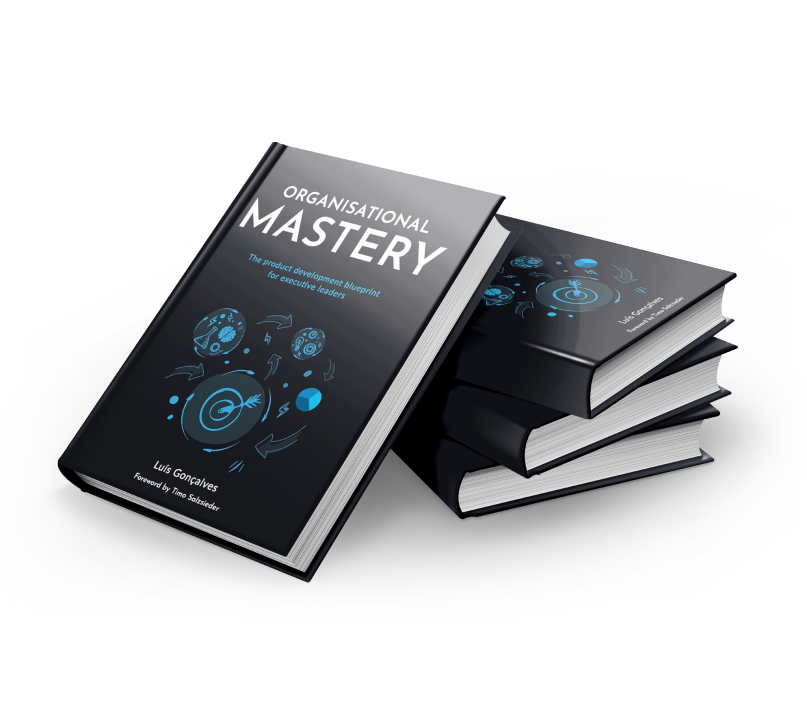Share this
Unlock The Power Of OKRs: The Secret Ingredient Of Success
by Luis Gonçalves on Jun 16, 2024 2:43:41 AM

OKRs, or Objectives and Key Results, are a goal-setting framework that helps organizations and individuals set, track, and achieve their goals. Initially created by Andy Grove at Intel, OKRs have gained widespread popularity in recent years, especially after being adopted by Google and other successful companies.
OKRs are critical to success because they help you focus on what matters most, align your team's efforts, and drive measurable progress toward your goals. When used effectively, OKRs can improve communication, foster a growth mindset, and propel your organization to new heights.
The Key Components of OKRs
Objectives
Objectives are the big-picture goals you want to achieve. They should be inspiring, ambitious, and strategically aligned with your organization's mission and vision. Objectives should be clear, concise, and easy for everyone to understand.
Key Results
Key Results are the specific, measurable outcomes you'll use to determine if you've achieved your objectives. They should be quantifiable, achievable, and time-bound. Key Results help you track progress and make adjustments as needed, ensuring your objectives remain relevant and attainable.
Implementing OKRs in Your Organization
Steps to implement OKRs
- Define your organization's mission and vision.
- Set top-level objectives aligned with your mission and vision.
- Break down objectives into smaller, departmental or team-level objectives.
- Develop Key Results for each objective.
- Communicate OKRs to all team members.
- Monitor progress and adjust OKRs as needed.
Common challenges and solutions
Implementing OKRs can be challenging, particularly in organizations with complex structures or cultures resistant to change. Some common challenges include lack of clarity, misalignment, and difficulty tracking progress. To overcome these challenges, ensure clear communication, involve all team members in the OKR-setting process, and establish a robust tracking system.
Aligning OKRs with Company Vision
Ensuring alignment
Alignment is crucial for the success of your OKRs. To achieve alignment, involve all levels of your organization in setting OKRs, from top management to individual contributors. Ensure that everyone understands how their OKRs connect to the overall company vision, and encourage collaboration across departments and teams.
Communicating the vision
To ensure that everyone in the organization is on the same page, communicate your company vision clearly and consistently. Use multiple channels, such as town hall meetings, internal newsletters, and team meetings, to share the vision and demonstrate how OKRs contribute to its achievement. Regularly reinforcing the vision helps keep it at the forefront of everyone's minds, making it easier to align individual and team efforts.
Tracking and Measuring OKRs
Setting up tracking systems
Effective tracking systems are essential for monitoring progress and making data-driven decisions. Set up regular check-ins to review progress on OKRs, and use software tools or dashboards to visualize your data. This enables you to identify trends, spot potential issues, and make necessary adjustments to keep your goals on track.
Reviewing and adjusting OKRs
Regular reviews of your OKRs ensure that they remain relevant, achievable, and aligned with your company vision. Set up a cadence for reviewing OKRs—quarterly, for example—and involve all stakeholders in the process. Use these reviews to celebrate successes, identify areas for improvement, and adjust OKRs as needed to maintain alignment and momentum.
Best Practices for Setting OKRs
Following best practices can help you maximize the effectiveness of your OKRs and ensure that your organization reaps the full benefits of this powerful goal-setting framework.
Keep it simple
When setting OKRs, avoid overcomplicating them. Focus on a few key objectives that will make the biggest impact, and limit the number of key results for each objective. This helps maintain clarity and keeps your team focused on what's most important.
Be ambitious yet realistic
Set ambitious objectives that inspire and challenge your team but remain within the realm of possibility. For key results, ensure they are achievable within the given timeframe. This balance between ambition and realism helps drive progress while avoiding demoralization due to unattainable goals.
Involve everyone
Inclusivity is crucial for successful OKR implementation. Involve all levels of your organization in setting and reviewing OKRs to ensure buy-in and alignment. This helps create a sense of ownership and responsibility, fostering a culture of collaboration and accountability.
Adapt and evolve
OKRs are meant to be dynamic, not static. Regularly review and adjust your OKRs as needed to keep them relevant and aligned with your company vision. This flexibility allows your organization to adapt to changing circumstances and maintain momentum toward your goals.
The Role of Leadership in OKR Success
Effective leadership plays a pivotal role in the successful implementation and ongoing use of OKRs.
Modeling the right behavior
Leaders should model the right behavior by setting their own OKRs, actively tracking progress, and demonstrating a commitment to the process. This sets the tone for the entire organization and encourages team members to fully embrace OKRs.
Providing support and resources
Leaders should ensure that team members have the necessary resources, training, and support to effectively use OKRs. This may include providing access to tracking tools, offering training workshops, or setting up mentorship programs.
Celebrating successes and learning from failures
Foster a culture of learning and growth by celebrating successes and openly discussing failures. Use OKRs to identify areas of improvement and encourage your team to learn from setbacks. This promotes resilience and continuous improvement, helping your organization unlock its full potential.
FAQs
-
How can I ensure that my OKRs are specific and measurable? To ensure your OKRs are specific and measurable, focus on developing key results that are quantifiable, time-bound, and directly tied to the achievement of your objectives.
-
What's the difference between an objective and a key result? Objectives are high-level, ambitious goals, while key results are specific, measurable outcomes that help you determine if you've achieved your objectives.
-
How can I keep my team motivated and engaged with OKRs? Involve team members in setting and reviewing OKRs, communicate the company vision, and celebrate successes to keep everyone motivated and focused on their goals.
-
What role does leadership play in the success of OKRs? Leaders play a crucial role in modeling the right behavior, providing support and resources, and fostering a culture of learning and growth to ensure the success of OKRs.
-
Can OKRs be adapted for remote or hybrid teams? Yes, OKRs can be adapted for remote or hybrid teams by using digital tools and platforms for tracking progress, facilitating communication,
Conclusion
Unlocking the hidden power of OKRs is truly the secret ingredient of success for organizations striving to achieve their goals. By setting clear objectives, aligning them with your company vision, and effectively tracking progress through key results, you can drive growth, improve communication, and foster a culture of high performance.
Did you like this article?
We enable leaders to become highly valued and recognized to make an impact on the World by helping them to design Digital Product Companies that will thrive and nourish in the Digital Age, we do this by applying our own ADAPT Methodology®.
Share this
- Agile Methodologies (18)
- Product Strategy (18)
- OKRs (16)
- Scrum (16)
- Product Mindset (14)
- Project To Product (10)
- Agile Retrospectives (9)
- CoPs (9)
- Knowledge Sharing (9)
- Time To Market (8)
- Product Discovery (7)
- Continuous Improvement (5)
- Strategy (5)
- Scrum Master (4)
- Content Marketing Strategy (3)
- Product Owner (3)
- Technical Excellency (3)
- Digital Transformation (2)
- Innovation (2)
- Scaling (2)
- Team Building (2)
- Business Model (1)
- Cost Of Delay (1)
- Customer Feedback (1)
- Customer Journey (1)
- Customer Personas (1)
- Design Thinking (1)
- Digital Leadership (1)
- Digital Product Tools (1)
- Go To Market Strategy (1)
- Google Design Sprint (1)
- Lean Budgeting (1)
- Lean Change Management (1)
- Market Solution Fit (1)
- Organisational Impediments (1)
- Outsourcing (1)
- Product (1)
- Product Metrics (1)
- Product Roadmaps (1)

Organisational Mastery
Get your free copy

ADAPT
Get your free copy

Product First
Get your free copy
